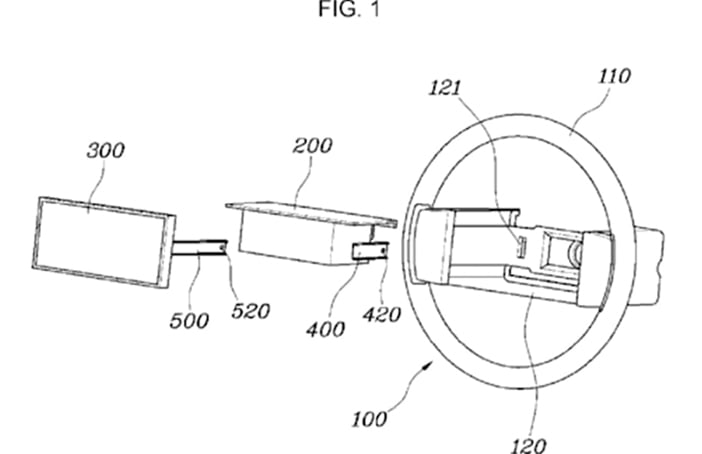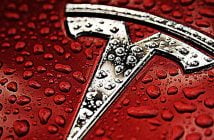+++ The AVERAGE TRANSACTION PRICE for a new vehicle in America hit a record of $45.031 in September. It’s the 6th consecutive month of record vehicle prices, according to Kelley Blue Book. That price represents a 12.1 % increase (or $4.872 in cold, hard cash) over the same month a year ago and a 3.7 % increase over the prior month (the federal government, meanwhile, calculates new-car prices are up 8.7% year over year). The reasons for the rapidly increasing prices of new vehicles are well documented, with inventory shortages caused by a lack of microchip availability cited as the latest problem. Last month, however, consumer buying preferences were also to blame; KBB reports that “the vehicle mix shifted in September away from lower-priced sedans, compacts and entry-level segments toward more-expensive pickups, SUVs and the luxury market”. “Midsize SUV sales jumped in September compared to August and full-size pickup share moved up as well”, Kayla Reynolds, analyst for Cox Automotive, said in a statement. “Sales of lower-priced compact and midsize cars, which had been commanding more share during the summer, faded in September. As long as new-vehicle inventory remains tight, we believe prices will remain elevated”. KBB says its transaction price data do not include consumer incentives, but also reports that incentive spending by automakers is similarly at record low levels. In fact, at an average of 5.2 % of the transaction price, it’s just over half the size of the average incentive from September of last year. +++
+++ BMW will be ready for any ban on internal combustion engine (ICE) cars from 2030 onwards with an offering of electric vehicles, chief executive officer Oliver Zipse said. The EU has proposed an effective ban on fossil fuel cars from 2035 as part of a broader package of measures to combat global warming. “We will be ICE-ban ready. If a region, a city, a country gets the idea of banning ICEs, we have an offering”, Zipse told a conference in the town of Nürtingen, near Stuttgart. “The BMW Group is not worried about this. Whether it’s a good idea is another question, but we will have an offering”. Unlike rivals including Volkswagen and General Motors, BMW has not set an end date for production of ICE cars. However, it has said it expects 50 % of global car sales to be electric vehicles by 2030. +++
+++ HONDA certainly has an interesting electric car strategy in the works. Or arguably multiple strategies. It’s currently selling the incredibly charismatic Honda E hatchback in Europe and Japan. For the U.S., it’s leaning on General Motors, with a couple of models coming for 2024, the first of which has been named Prologue. And for China, it has a whopping 10 models planned to launch in the next 5 years. Now Honda has shown a couple of those production models, and, perhaps more interesting, three concepts that hint at what’s coming. All of these electric Hondas for China will be sold under the sub-brand of e:N. The first production ones are called e:NS1 and e:NP1. They’re very clearly based on the HR-V and the e:Prototype concept from earlier this year. As for the concepts, they’re called plainly the e:N SUV, e:N GT and e:N Coupe concepts, and the body styles reflect the names, with the GT seemingly a sedan. They all share razor-sharp body lines and simple, flat planes. The front running lights have vertical sections that protrude forward, and seem to be matched at the back, almost like modern renditions of ’80s Cadillac design. They’re also shaped very similarly to each other, save for adjustments to accommodate the body style differences. Honda hasn’t said anything about the motors or battery packs for the e:N concepts, but production will start within 5 years. Honda is building factories with Dongfeng and GAC that will produce e:N models starting in 2024, and the production versions of the concepts will probably be built there. There’s a chance some of these e:N models will be sold elsewhere, maybe even the U.S., since Honda intends to export some models. We emphasize “chance”, though, since Honda doesn’t say in what markets it plans to sell the e:N cars. If nothing else, it’s possible some of the e:N cars’ styling cues could appear on other Honda electric models. All new models Honda will launch in China in 2030 and later will be electrified vehicles, also including hybrid vehicles. To boost its electrified vehicle production capacity, Honda will build an electric vehicle plant in China with its operations seen starting in 2024. The automaker may export electric vehicles produced at the plant to other markets. Among Honda’s rivals in Japan, Toyota and Nissan have already launched their EV models in China. Toyota plans to raise the share of electrified models in all of its vehicles sold in China to 100 % in 2035, with half of them either electric vehicles or fuel cell vehicles. Nissan aims to reach 100 % in all major markets including China in the early 2030s. The first 2 Honda models, which will be SUVs, will go on sale from early 2022 at its two joint ventures GAC Honda and Dongfeng Honda. They will be the first Honda-branded electric vehicles in China. The 2 joint ventures have been producing and selling electric models for years but they don’t bear Honda’s logo.The carmaker said dedicated spaces for its electric cars will be created at its approximately 1.200 dealerships around China. It is planning to launch dedicated electric car dealerships in major cities of the country, but did not give a schedule. The GAC Honda and Dongfeng Honda joint ventures will produce electric models for other markets as well, said the carmaker. Honda said it will accelerate collaboration with Chinese battery producer CATL to ensure battery supplies for its massive electrification campaign in the country. The 2 companies signed an agreement to cooperate on R&D in July last year when Honda bought a stake of around 1 % in CATL. The Japanese carmaker also said it will no longer introduce any new gasoline-powered models in China after 2030, which means all new models will be electric cars and hybrids. In April, Honda announced its electrification target, aiming to increase the ratio of electric cars and fuel cell vehicles in major markets including China to 40 % of its total sales by 2030. The figure would rise to 80 % by 2035 and then to 0 % percent by 2040. China has been the world’s largest new energy vehicle market. In the first 3 quarters, sales of electric cars and plug-in hybrids totaled about 2.16 million units, up 190 percent year-on-year. The China Association of Automobile Manufactures said their sale this year could hit 3 million units this year in the country. Having a strong foothold in China is a prerequisite for Honda to achieve its 2040 carbon-neutral target, said Takeshi Miyao, an analyst at Carnorama. “This is the best scenario for Honda to expand its push to EVs”. he added, noting that while Honda has an alliance with General Motors , China is the more advanced EV market. Honda will face stiff competition, however. Toyota and Nissan are also in China with Toyota planning 15 battery models by 2025 and Nissan already saying it will only sell electric and hybrid models by that date. Tesla’s Shanghai factory, meanwhile, now produces more EVs than its facility in Fremont, California. Tesla also reported record China shipments this week, delivering 56.006 cars in September for domestic purchase and export. And China’s EV sector is increasingly dominated by homegrown brands like Nio and Xpeng, with European brands such as BMW and Volkswagen struggling to win over local consumers. Still, EVs in China are on a steep growth trajectory. Figures from the nation’s Passenger Car Association showed deliveries of new-energy vehicles, which includes EVs and plug-in hybrids, soared 202 % from a year earlier to 334.000 units last month. “We see strong sales momentum for new-energy vehicles going forward”, PCA secretary general Cui Dongshu said. McKinsey & Co. predicts the share of EVs in China will climb above 70 % of new car sales by 2030, underscored by robust customer demand and a charging network that’s much more advanced than many Western nations. Honda also unveiled the revamped Honda Sensing driver-assistance system, saying that it will be mounted on 4-wheel vehicles sold in China from next year. The system has improved automatic braking equipment that detects pedestrians when the vehicle turns left or right at crossings. By 2030, Honda aims to make the system standard equipment for all models sold in advanced countries. +++
+++ Car companies seem intent on reinventing the wheel. The latest is HYUNDAI , which has filed for a patent for a steering wheel with a digital screen embedded in it. It addresses the issue, the company says, of some drivers not being able to see the instrument cluster because its view can be obstructed by the steering wheel. The patent, filed AT Germany’s patent office, shows a rather simple diagram of a rectangular screen affixed inside a housing in the steering wheel. The positioning of the screen raises several questions. For example, how would an airbag deploy in case of an accident? Hyundai apparently has an answer. The airbag is contained in the steering wheel and spaced far enough on separate mounts so that it can deploy without damaging the screen. As with Tesla’s ill-reviewed yoke, it also makes us wonder what will happen when the car is deep into a turn and the steering wheel is locked on one direction or another. Will the screen display upside down or re-orient itself? To be fair, Hyundai may have given us a preview of this technology in the 2019 Genesis Mint concept shown at the New York International Auto Show. There, however, the steering wheel appears to be separate from the center-mounted screen with deep spokes. Conceivably, this could allow the wheel to turn independently of a stationary screen, but this is not how the patent illustration is drawn. There, the screen appears to be connected to the round, turning section of the steering wheel. The setup would also put the screen several inches below an instrument cluster’s traditional position. A quick glance at key functions could become a longer gander away from the road. As with Tesla’s yoke, it could be a sign that Hyundai is more bullish on autonomous driving tech than previously thought, in which case the steering wheel is considered a vestigial part of the car that will see little use. If not, though, it seems like an answer to a question no one is asking. +++

+++ SKODA has been given full technical control of Volkswagen Group’s entry-level MQB-A0 platform; the first time it has had responsibility for a cross-brand architecture. It follows the Czech manufacturer’s development of the specialised MQB-A0-IN platform for the Indian market, where series production of the Skoda Kushaq compact SUV began in June. This will form the basis of other Skoda and Volkswagen products in the future, with a second model due to be revealed later this year. The existing MQB-A0 platform underpins the Volkswagen Polo and T-Cross, the Audi A1 Sportback, Seat’s Arona and Ibiza and Skoda’s Fabia, Kamiq and Scala. Giving Skoda control of MQB-A0 is a significant step in Wolfsburg’s plan to use the Czech firm as its lead brand in emerging markets, namely Russia, Africa, Southeast Asia and Latin America. The Volkswagen Group points to independent market studies that suggest deliveries of ICE vehicles will rise by 58 % to 7.5 million in these territories over the next 10 years, with a further million expected to be sold in the 5-year period thereafter. Skoda’s experience in entry-level segments will be used to target new models in those growth markets. “By assuming responsibility for the MQB-A0 global platform, Skoda Auto is in charge of the worldwide development of a platform for the first time”, said Skoda CEO Thomas Schäfer. “We’re applying our development expertise, taking on even more responsibility within the Volkswagen Group and at the same time strengthening Skoda Auto’s headquarters as an important European development centre for the Group. “I’m convinced that we will be able to win over many new customers thanks to the MQB-A0 global platform and bolster the Group’s position in the entry-level segments”. Ralf Brandstätter, chairman of the Volkswagen board of management, added: “Through our comprehensive platform strategy, we achieve economies of scale that enable us to offer our customers worldwide state-of-the-art technology and high quality at competitive prices. Based on this, the Group’s volume brands (Volkswagen and Skoda) can quickly deliver products to customers that are unique in the volume segment. “As a brand with significant expertise in entry-level mobility, Skoda is ideally positioned to assume worldwide responsibility for the successful further development of the MQB-A0 global platform within the Volkswagen Group. This way we’re creating synergies that will further increase profitability within the volume group”. Hundreds of new jobs will be created as a result of the move, many of which will arise in Skoda’s technical department. The majority of these positions are expected to be filled by new recruits. +++
+++ Skoda has made huge strides with its latest Octavia and the Enyaq iV, but the brand hasn’t forgotten its flagship saloon and estate, the SUPERB , which celebrates its 20th birthday this year. Spied testing recently, the Mk4 Skoda Superb will introduce a fresh approach to exterior styling and an all-new cabin when it arrives in 2023. The Superb will still be based on MQB, the VW Group’s modular platform. But as the car caught testing shows, it will get a slight increase in length and wheelbase to help further distance it from the Octavia, which grew for its 4th generation. Expect the Superb’s exterior look to make use of that extra length, including a slightly longer rear overhang and an almost coupé-like roofline for the hatch. The side profile will be enhanced by strong single shoulder lines running along the flanks, identified recently by Skoda exterior designer Petr Matusinec as one of its key design criteria. The car should also feature one of the widest ever executions of Skoda’s grille. The Superb will also be powered by the VW Group’s final generation of combustion engines, including 2.0-litre petrol and diesel motors compatible with Euro 7 emissions rules likely to be introduced in 2025. It will also be available with a new plug-in hybrid powertrain; Skoda CEO Thomas Schäfer recently confirmed that while there are no plans for a PHEV version of the Kodiaq, because it has a higher percentage of private buyers, the likes of the Octavia and Superb remain popular fleet choices, so justify the development cost of accommodating hybrid variants. It’s inside where the Superb should get closest to revolution, with a new approach to how users interact with the controls. This has been a controversial area within the VW Group, thanks to a mixed response for the interface within the latest Golf. Skoda avoided some of these problems through better use of its infotainment screens, but Schäfer says that more fundamental revisions will arrive with the Superb. “The car’s interior is a huge step forward”, he told. “It will carry our new user language, which extends to what you touch and feel. Superb will get it first, and then the second-generation Kodiaq after. We’ll see some elements from Enyaq iV, but we think we need to do more of the traditional controls, not only playing with the biggest display in the industry (a hint that the Superb could feature the Enyaq’s 13-inch screen) but also having elements that make sense for our brand. If there’s one brand that should be functional, clear and easy to use, it’s us”. Autointernationaal understands this could mean multiple functions for single physical dials and switches. +++
+++ U.S. safety investigators want to know why TESLA didn’t file recall documents when it updated Autopilot software to better identify parked emergency vehicles, escalating a simmering clash between the automaker and regulators. In a letter to Tesla, the National Highway Traffic Safety Administration told the electric car maker that it must recall vehicles if an over-the-internet update mitigates a safety defect. “Any manufacturer issuing an over-the-air update that mitigates a defect that poses an unreasonable risk to motor vehicle safety is required to timely file an accompanying recall notice to NHTSA”, the agency said in a letter to Eddie Gates, Tesla’s director of field quality. The agency also ordered Tesla to provide information about its “Full Self-Driving” software that’s being tested on public roads with some owners. The latest clash is another sign of escalating tensions between Tesla and the agency that regulates partially automated driving systems. In August the agency opened an investigation into Tesla’s Autopilot after getting multiple reports of vehicles crashing into emergency vehicles with warning lights flashing that were stopped on highways. The NHTSA opened a formal investigation of Autopilot in August after a series of collisions with parked emergency vehicles. The investigation covers 765.000 vehicles, almost everything that Tesla has sold in the U.S. since the start of the 2014 model year. Of the dozen crashes identified as part of the probe, 17 people were injured and one was killed. According to the agency, Tesla did an over-the-internet software update in late September that was intended to improve detection of emergency vehicle lights in low-light conditions. The agency says that Tesla is aware that federal law requires automakers to do a recall if they find out that vehicles or equipment have safety defects. The agency asked for information about Tesla’s “Emergency Light Detection Update” that was sent to certain vehicles “with the stated purpose of detecting flashing emergency vehicle lights in low light conditions and then responding to said detection with driver alerts and changes to the vehicle speed while Autopilot is engaged”. The letter asks for a list of events that motivated the software update, as well as what vehicles it was sent to and whether the measures extend to Tesla’s entire fleet. It also asks the Palo Alto, California, company whether it intends to file recall documents. “If not, please furnish Tesla’s technical and/or legal basis for declining to do so”, the agency asks. When automakers find out about a safety defect, they must tell NHTSA within five working days, and they’re required to do recalls. NHTSA monitors the recalls to make sure they cover all affected vehicles and the automakers are making proper efforts to contact all owners. Tesla has to comply with the request by Nov. 1 or face court action and civil fines of more than $114 million, the agency wrote. In a separate special order sent to Tesla, NHTSA says that the company may be taking steps to hinder the agency’s access to safety information by requiring drivers who are testing “Full Self-Driving” software to sign non-disclosure agreements. The order demands that Tesla describe the non-disclosure agreements and how they are signed by Tesla drivers. The company also must say whether Tesla requires owners of vehicles equipped with Autopilot to agree “to any terms that would prevent or discourage vehicle owners from sharing information about or discussing any aspect of Autopilot with any person other than Tesla”. Responses must be made by a Tesla officer under oath. If Tesla fails to fully comply, the order says the matter could be referred to the Justice Department for court action to force responses. It also threatens more fines of over $114 million. Tesla has said that neither vehicles equipped with “Full Self-Driving” nor Autopilot can drive themselves. It warns drivers that they must be ready to intervene at all times. It was unclear how Tesla and mercurial CEO Elon Musk will respond to NHTSA’s demands. The company and Musk have a long history of sparring with federal regulators. In January, Tesla refused a request from NHTSA to recall about 135.000 vehicles because their touch screens could go dark. The agency said the screens were a safety defect because backup cameras and windshield defroster controls could be disabled. A month later, after NHTSA started the process of holding a public hearing and taking Tesla to court, the company agreed to the recall. Tesla said it would replace computer processors for the screens, even though it maintained there was no safety threat. Musk fought with the Securities and Exchange Commission over a 2018 tweet claiming that he had financing to take Tesla private, when that funding was not secured. He and the company agreed to pay $20 million each to settle allegations that he misled investors. Later the SEC sought to hold Musk in contempt of court for tweeting a misleading projection of how many cars Tesla would manufacture. Musk branded the SEC the “shortseller enrichment commission,” distorting the meaning of its acronym. Short sellers bet that a stock price will fall. The new demands from NHTSA signal a tougher regulatory stance under President Joe Biden on automated vehicle safety compared with the previous administrations. The agency had appeared reluctant to regulate the new technology for fear of hampering adoption of the potentially life-saving systems. The National Transportation Safety Board, which also has investigated some of the Tesla crashes dating to 2016, has recommended that NHTSA and Tesla limit Autopilot’s use to areas where it can safely operate. The NTSB also recommended that NHTSA require Tesla to have a better system to make sure drivers are paying attention. The NTSB has no enforcement powers and can only make recommendations to other federal agencies. +++


